Inflammation (or phlogosis) is an innate and non-specific defence mechanism. It is a protective response by the body, one which aims to eliminate the initial cause of the cellular damage and begin the process of tissue repair. Inflammation is a prevalently local reaction, and the response to the damage is given by the cells which have survived its action. Damage can be caused by:
- physical agents (injury, heat, radiation)
- chemical agents (strong acids and bases)
- biological agents (bacteria, viruses and parasites)
- necrosis
- hypoxia

Inflammation is classified depending on its timeframe into acute and chronic inflammation. Chronic inflammation may be a result of acute inflammation or be chronic in nature from the outset; it can be diffuse (chronic interstitial inflammation) or localised (chronic granulomatous inflammation).
The inflammatory response includes a vascular component (angiophlogosis) and a tissue component (histophlogosis), which combine in various proportions depending on whether the process is acute or chronic.
The main stages of acute inflammation occur in the following order:
- vasodilation: causes an increase in blood flow with consequent hyperaemia
- increased vascular permeability of the microcirculation, with consequent exit of the liquid component of the blood
- formation of exudate: extravascular fluid rich in plasma proteins
- diapedesis: migration of white blood cells (leukocytes) from the microcirculation to the extracellular compartment
- Chemiotaxis: accumulation of leukocytes at the injury site following the release of chemical mediators (cytokines)
- phagocytosis: ingestion and destruction of pathogenic microorganisms and cellular detritus by certain leukocytes (granulocytes, neutrophils and macrophages), followed by the resolution or chronicisation of the inflammatory process
Chronic inflammation differs from acute inflammation in the following ways:
- a greater duration (possibly for years)
- prevalence of macrophages, lymphocytes and fibroblasts (as opposed to granulocytes and neutrophils in acute phlogosis)
- proliferation of blood vessels (neoangiogenesis) and fibrosis (vascularisation tissue)
The main symptoms of phlogosis are clinical manifestations of tissue changes, and occur in the following order:
- calor (increase in local temperature due to increased vascularisation)
- tumor (swelling caused by the formation of exudate)
- rubor (reddening due to active hyperaemia)
- dolor (pain caused by the compression and intense stimulation of the nerve endings by the inflammatory agent and the components of the exudate)
- functio laesa (functional compromise of the affected area).
The sensation of pain is in turn regulated by the central nervous system centres. The perception of the pain associated with the injury is subjective and influenced by the external environment. The differing perceptions of pain may also be due to a release of endorphins (known as endogenous opioid analgesics) that differs from one person to the next.
The main cells involved in the inflammatory process are:
- granulocytes (basophils, neutrophils and eosinophils)
- monocytes (circulating) and macrophages (in the tissues)
- mast cells
- lymphocytes (T, B and NK)
- endothelial cells
- platelets and fibroblasts
The chemical mediators of phlogosis take the form of numerous molecules which trigger, maintain and in some cases limit the modifications to the microcirculation described previously. Some of these are contained in cellular organelles from which they are released following inflammatory stimuli (preformed mediators). Others are synthesised and secreted in response to phlogistic stimuli (newly synthesised mediators), while others still are formed in the blood starting from inactive precursors. The sensory nervous system in turn contributes to certain inflammatory manifestations through neuropeptides (such as substance P and neurokinins).
The main chemical mediators are:
- cytokines (interleukins, chemokines, lymphokines)
- leukotrienes
- neurotransmitters (serotonin, histamine)
- coagulation factors
- platelet activation factor (PAF)
- lysosomal enzymes
- reactive oxygen species (ROS) and nitric oxide (NO)
Acute phase response: if the inflammation is particularly intense or involves a very large area of tissue, there may be a systemic response affecting the entire body.
- fever and shivering
- leukocytosis (increase in number of white blood cells)
- fatigue and general malaise
- tachycardia (increase in heart rate above 90 bpm)
- lack of appetite and cachexia (weight loss, wasting)
- increase in acute phase proteins
There are three possible outcomes of the inflammatory process:
- Necrosis, caused by the destruction of cells by the lysosomal enzymes which not only damage the microorganisms but also the tissues, leading to tissue death.
- Chronicisation, which sets in when the inflammatory reaction has not completely eliminated the underlying cause of the inflammatory process.
- Healing: the liquid part of the exudate is reabsorbed, while the leukocytes undergo programmed cell death after having phagocytised and destroyed the pathogenic agents.
Often found in clinical practice are cases of silent inflammation, a chronic, low grade inflammation generally not accompanied by symptoms in the affected organs. Its presence is sometimes revealed by changes in certain blood chemistry parameters, such as modest increases in PCR (C-reactive protein), ESR (erythrosedimentation rate), fibrinogen, uric acid, and ferritin.
A key factor in the genesis and perpetuation of the inflammatory state is NF-kB (nuclear factor-kB), comparable to a sort of “switch” that must be kept in the “off” position. If it is activated for some reason, the conditions are created for the onset of numerous diseases such as:
- obesity
- cardiovascular diseases
- diabetes
- metabolic syndrome
- gout
Food can also be a source of inflammation. A diet rich in cooked foods, chemically treated, high in refined sugars and saturated fats leads to an alteration of the gut microbiota and a worsening of the inflammatory state.

A diet high in antioxidants (omega-3, zinc, selenium, vitamins B12, C, D, E, coenzyme Q) mainly found in fresh fruit and vegetables, low in saturated fat and with a low glycaemic index plays a vital role in reducing systemic inflammation. The beneficial effect of this diet acts in synergy with that of anti-inflammatory drugs, regular physical activity, and a reduction in smoking and alcohol consumption.
Article by Dr. Giovanni Cappella
